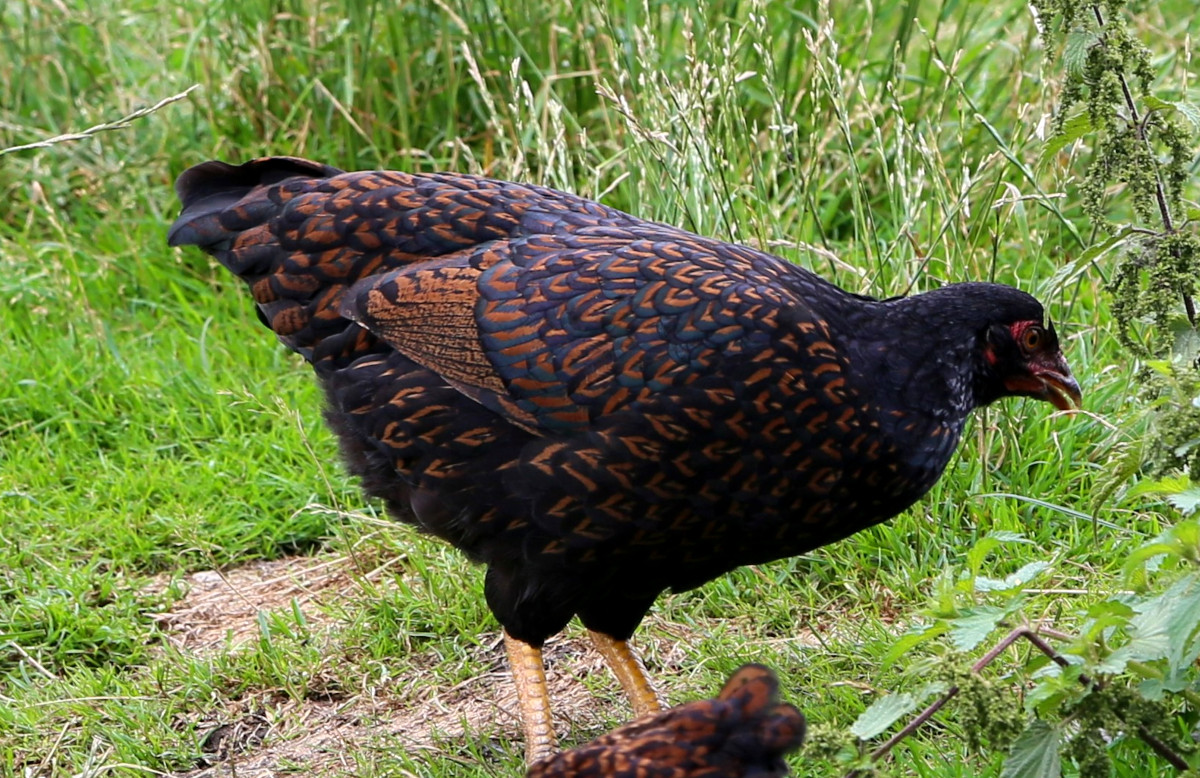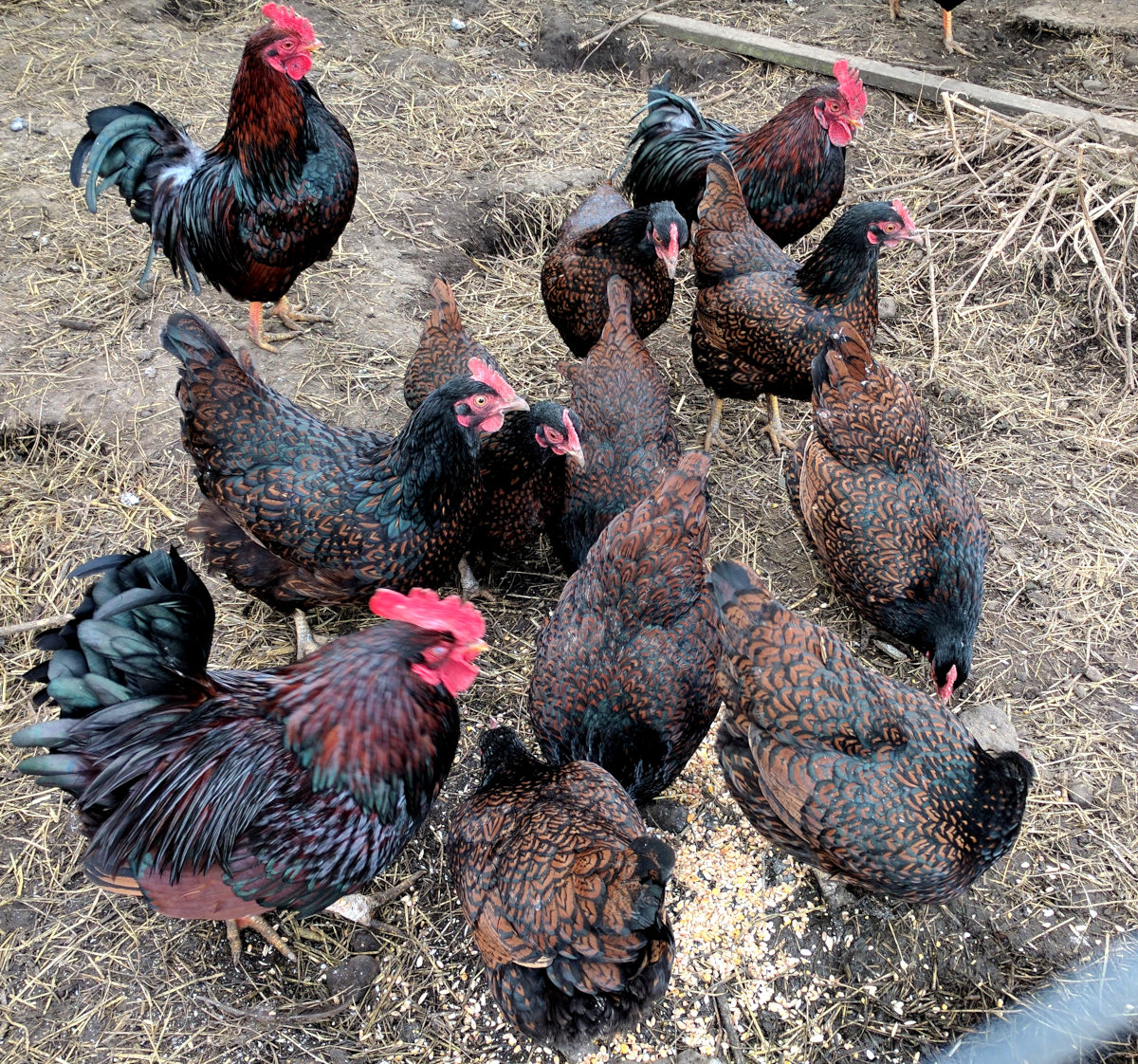How long does a chicken breeding program take before you get show quality birds.

Breeding good chickens, whether for meat, eggs, or show purposes, is a process that can take many generations to achieve the desired traits and characteristics.
Table of Contents
The exact timeline can vary depending on your goals, the specific chicken breeds you're working with, and the breeding methods employed.
How long does it take to breed good birds?
Patience is needed as it can take 10 to 15 years and 15 to 20 generations or more to breed good chickens and realise your goals. It took me 11 years To get my first winner from birds I had bred myself.
Chickens are not hard to breed, just putting males and females together will result in offspring. It takes time and skill to learn how to make the best matches. I have made plenty of mistakes over the years and that is something you should expect as well.
Below: Barnevelders were my first breeding success.

The amount of time it takes to breed good chickens will vary depending on your goals and the specific traits you are trying to improve. However, it is generally accepted that it takes at least three generations to see significant results from a breeding program.
Another reason it takes so long to breed quality chickens is that you have to wait for the offspring to reach maturity before they are assessed and either culled from the program or allowed to breed themselves.
As I raise heritage and rare breeds which tend to be slow growing, I wait a full year for them to mature as I often find it difficult to tell exactly what they will look like when they are young.
I have found that birds with complex feather patterns benefit from going through a moult before being selected for breeding.
How many birds will you need as foundation stock?
When I started my Silver Laced Barnevelder bantam breeding project I had just 6 birds to start with, 2 males and 4 females. This is the minimum that you can succeed with.
Remember two equal factors:
- The quality of the foundation stock.
- The ability shown by the breeder in selecting and eliminating.
In the first generation, I selected the best birds from your flock to breed together.
Below: Chickens from my Silver laced Barnevelder breeding project.

These birds had the traits that I was looking for and trying to improve on. The first match should always be a direct sibling mating, between brother and sister for example, as this will show any weaknesses in the genetics of the birds.
In the second generation select the best offspring from the first generation to breed together. This is when you will begin to fix those traits into your strain.
These offspring will be more likely to have the desired traits, but there will still be some variation. In the third generation, you should start to see a more uniform flock of birds with the desired traits.
Below: Flock uniformity takes time. This is from 10 years into my breeding program and there are still issues with the combs and the feathering on some of the cockerels.

You will also notice the large comb on one of the hens, she definitively will not be going forward in the spring.
What affects the results of a breeding program:
The amount of time it takes to breed good chickens will also depend on the following factors:
- The breed of chicken you are working with. Some breeds are more difficult to breed than others.
- Your space and time constraints. More land, resources and time will speed results.
- The specific traits you are trying to improve. Some traits are more difficult to improve than others.
- The size of your flock. A larger flock will give you more birds to choose from, which can speed up the breeding process.
- How many chicks you can produce. Being able to produce more young birds will speed up the process
- The quality of your breeding stock. Birds that are healthy and have good genetics are more likely to produce healthy and vigorous offspring.
If you are serious about breeding good chickens, it is important to be patient and to keep accurate records of your breeding program.
I use leg rings and a hand written breeding register to keep track of my birds, you could use an excel spreadsheet but I prefer to do it manually as I don't like to make notes and then add it to a document later when I am at the computer.
Records will help you to track your progress and to make informed decisions about which birds to breed together.
A chicken breeding plan timeline:
This is based roughly on how long it took me as a breeder to see results.
Selecting the Foundation Stock (1-2 years): It starts with choosing high-quality, purebred chickens as your foundation stock. This step may take up to a year or more to research and acquire the right birds.
Test mating (2 years): Your foundation flock needs to be test mated to ensure they are fertile and have no undesirable traits.
Breeding for Traits (2-5 years): After obtaining your initial stock, you'll need to carefully select birds with the desired traits, such as size, egg production, feather colour, temperament, or any other characteristics you're aiming for.
Below: Notice the improved leg colour in the young bird on the left.

This process can take several years of selective breeding to consistently produce offspring with these traits.
Generational Improvement (3-5 years or more): Over successive generations, you'll continue to breed the chickens that exhibit the best traits. Each generation should get closer to your ideal chicken characteristics. This step can take several years, especially if you're working on complex traits or multiple traits simultaneously.
Standardising your strain of the Breed (5-10 years or more): Once you've consistently produced chickens with the desired traits for several generations, you'll need to work on stabilising these traits, so they breed true in subsequent generations. This can take several years or even a decade or more.
Outcrossing (Ongoing): Occasionally you will likely need to introduce new blood and traits and some stage of the breeding program. Outcrossing is achieved by test breeding with a suitable unrelated chicken.
Record Keeping and Evaluation (Ongoing): Throughout the breeding process, it's crucial to maintain detailed records of each generation's traits and performance. Regularly evaluate your breeding program and make adjustments as needed to maintain or improve the quality of your chickens.
Registration and Recognition (Optional): If you're working with a specific breed and aim to have it officially recognised, this process can take additional time, as you'll need to meet the breed standards established by poultry organisations.
Some tips for breeding good chickens:
- Start with healthy and vigorous birds that have the desired traits.
- Select breeding stock from multiple bloodlines to increase genetic diversity.
- Breed birds that are compatible in terms of temperament and size.
- Keep accurate records of your breeding program so that you can track your progress.
- Be patient and persistent. It takes time to breed a flock of good chickens.
- Learn from your mistakes, they are the best teacher.
